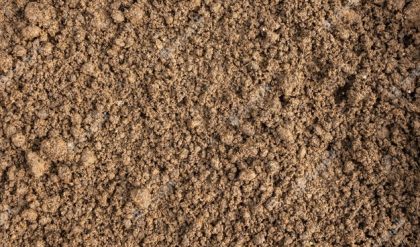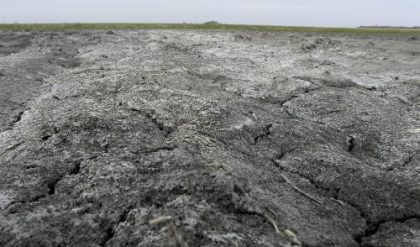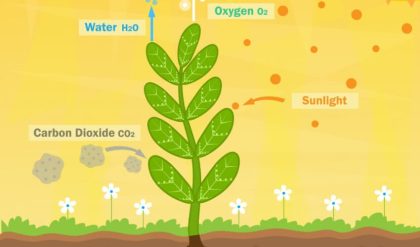When water supplies are restricted, so that full evapotranspiration demands cannot be met, limited irrigation results. Limited irrigation management are practices that incorporate crop rotations, water management during the vegetative growth stages and farming practices to minimize water stress during the critical crop growth stages. Reasons for limited water supplies include:
1. Limited capacity of the irrigation well – In regions with limited saturated depth of the aquifer, well yields can be marginal and not sufficient to meet the needs of the crop.
2. Restricted allocation upon pumping – In some regions that have experienced declining groundwater levels, restrictions have been implemented to decrease the amount of pumping by producers. In some instances, the allocations are less than what is required to fully irrigate the crops grown.
3. Reduced surface water supplies or storage – In regions that rely upon surface water to supply irrigation needs, droughts and water transfers can have a major impact on the amount of water that is available to producers for irrigation.
When producers cannot apply water to meet the ET of the crop, they must realize that with typical management practices, yields and returns from the irrigated crop will be reduced as compared to a fully irrigated crop. To properly manage the water for the greatest return, producers must have an understanding of how crops respond to water, how crop rotations can enhance irrigation management, and how changes in agronomic practices can influence water needs.
There are several important “pieces to the puzzle” that help to facilitate limited irrigation strategies. Many of these principles come from dryland water conservation management. They include: the relationship between grain yield and water use (evapotranspiration), understanding how water stress impacts crops during several growth stages, crop residue management for water conservation, plant population management, crop rotations to balance water use, and irrigation timing. These factors will be discussed separately and then combined in actual demonstration/case studies of limited irrigation.
Crop Response to Water
Yield and Evapotranspiration
Evapotranspiration (ET) is the amount of water that is used by the crop and is the driving force behind crop yields. ET is the sum of evaporation of water from the soil or crop surface and transpiration by the crop. Potential crop yields typically increase linearly with the amount of water that is used by the crop (Figure 1, below).

Water stress during critical time periods can result in lower than potential yields. Crops, such as corn, respond with more yield for every inch of water that the crop consumes as compared to winter wheat or soybeans. However, crops such as corn require more water for development or maintenance before any yield is produced as indicated by where the yield-ET line intersects the X-axis. Corn requires approximately 10 inches of ET to produce the first increment of yield as compared to 4.5 and 7.5 inches of ET for wheat and soybeans (Figure 1). These crops also require less ET for maximum production. Irrigation is important to increasing ET and grain yields. Irrigation is used to supplement rainfall in periods when ET is greater than precipitation. However, not all of the water applied by irrigation is used for ET. Inefficiencies in applications by the system result in losses. As ET is maximized, more losses occur since the soil is nearer to field capacity and more prone to losses such as deep percolation (Figure 2, below).

Impact of Water Stress
Crops respond to water stress differently at several growth stages. Many grain crops have little yield response to water stress during the vegetative growth stage and during late reproductive or grain fill growth stages. However, crops are sensitive to water stress during the reproductive growth stages and yields will be impacted during this time period.
When producers have limited water supplies, but have control over when they can irrigate, limiting water during the growth stages that are least sensitive to water stress while saving water for the critical growth stages can be a valuable strategy to maximize yield return from water. Figure 3 (below) shows the yield susceptibility of corn through the growing season. Early water stress has less impact on grain yield as compared to the tassel to silk period. Water stress reduces transpiration as compared to a non-stressed crop. Stressing a crop during the time periods when water use is lower limits the total impact of water use reductions as compared to water stress during growth stages that have higher potential transpiration rates.

Agronomic Practices
Residue Management
The goal when working with limited water is to capture, store, and preserve every possible source of water in the production system. These sources include rainfall, snowfall and irrigation water. Residue management can have a significant impact on increasing the availability of water. Producers in the Central Plains have long advocated no-till for dryland production. No-till increases the amount of water stored in the soil due to reduced evaporation from tillage operations, improved infiltration and reduced runoff, and increased snow catch during winter snowstorms. Changes in tillage management have allowed producers to change rotations from the conventional wheat-fallow rotation to more intensive rotations such as wheat-corn-fallow. The changes in tillage management can be successfully used in irrigated production for moisture conservation.
After harvest, leaving the residue standing can have a major impact on snow catch. Nielsen (1998) found that standing sunflower residue increased the amount of snow captured in years with strong drifting storms. In most years, standing residue accounted for nearly 2 inches in increased soil moisture over flat residue. In one year, standing residue accounted for nearly 4 more inches of stored soil moisture. Surface residue during the growing season can also impact water conservation. Todd et al. (1991) found that wheat residue reduced the amount of evaporation from the soil by nearly 2.5 inches during the growing season for irrigated corn as compared to bare soil. Most of the savings occurred before the corn crop reached full canopy. Water savings from corn residue would be expected to be less since it does not cover the soil completely Runoff from precipitation is also reduced when surface residue is present. Residue reduces the impact of rainfall and irrigation on surface sealing, which increases infiltration rates. As droplets impact the soil surface, they destroy the surface structure which will seal the soil surface and reduce infiltration rates. Residue protects the soil surface from the impact of these droplets. Residue also acts as small dams that slow water movement and allow for more time for the water to infiltrate into the soil.
Plant Populations
Recommended plant populations for dryland production are less than that for irrigated production. Populations are lowered to reduce ET by the crop to better match precipitation and stored soil moisture. However, when considering populations reductions for irrigated corn, populations must be reduced to less than 18,000 plants /acre to reduce ET. Lamm and Trooien (2001) found that corn grain yields generally increased as plant populations increased from 22,000 plants/acre to 34,000 plants /acre for varying irrigation capacities. The yield penalty at higher plant populations was small compared to lower populations when minimal irrigation was applied. However, during years with above-average precipitation, higher populations have a greater yield potential.
Crop Rotations
Crop rotations can have a major impact upon the total water needs by irrigation. Crop rotations that have lower water use crops such as soybean or winter wheat can reduce irrigation needs. Schneekloth et al. (1991) found that when limited to 6 inches of irrigation, corn following wheat yielded 13 bu/acre (8 percent) more than continuous corn. The increased grain yield following wheat was due to increased stored soil moisture during the non-growing season that was available for ET during the growing season.
Crop rotations also spread the irrigation season over a greater time period as compared to a single crop. When planting multiple crops such as corn and winter wheat under irrigation, the irrigation season is extended from May to early October as compared to continuous corn, which is predominantly irrigated from June to early September. Crops such as corn, soybean and wheat have different timings for peak water use (Figure 4, below)
 .
.
With low capacity wells, planting the acreage with multiple crops with different peak water need periods allows for water to be applied at amounts and times when each crop needs the water. The net effect of irrigating fewer acres at any one point in time is that ET demand of that crop can be better met. Irrigation management can be as needed, rather than in anticipation of crop ET. With low capacity systems, producers generally begin to irrigate early to keep the soil moisture as close to field capacity as possible in anticipation that their system cannot meet crop water needs later during peak water needs.





